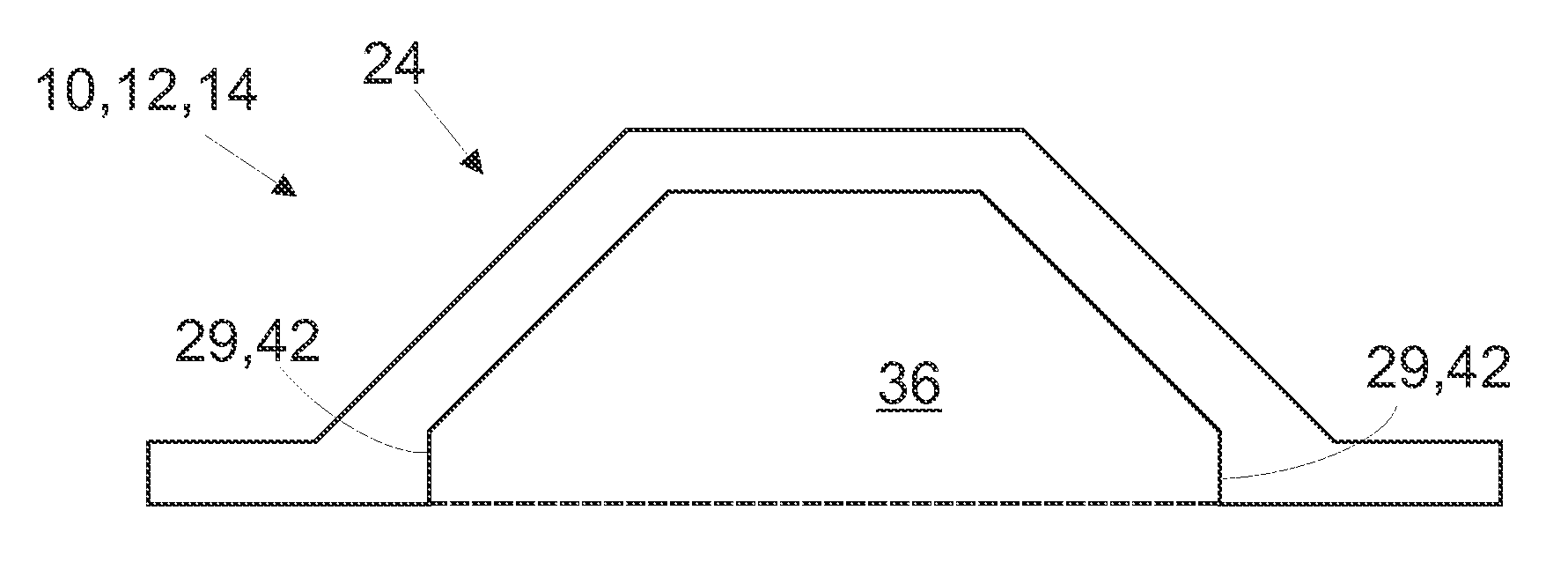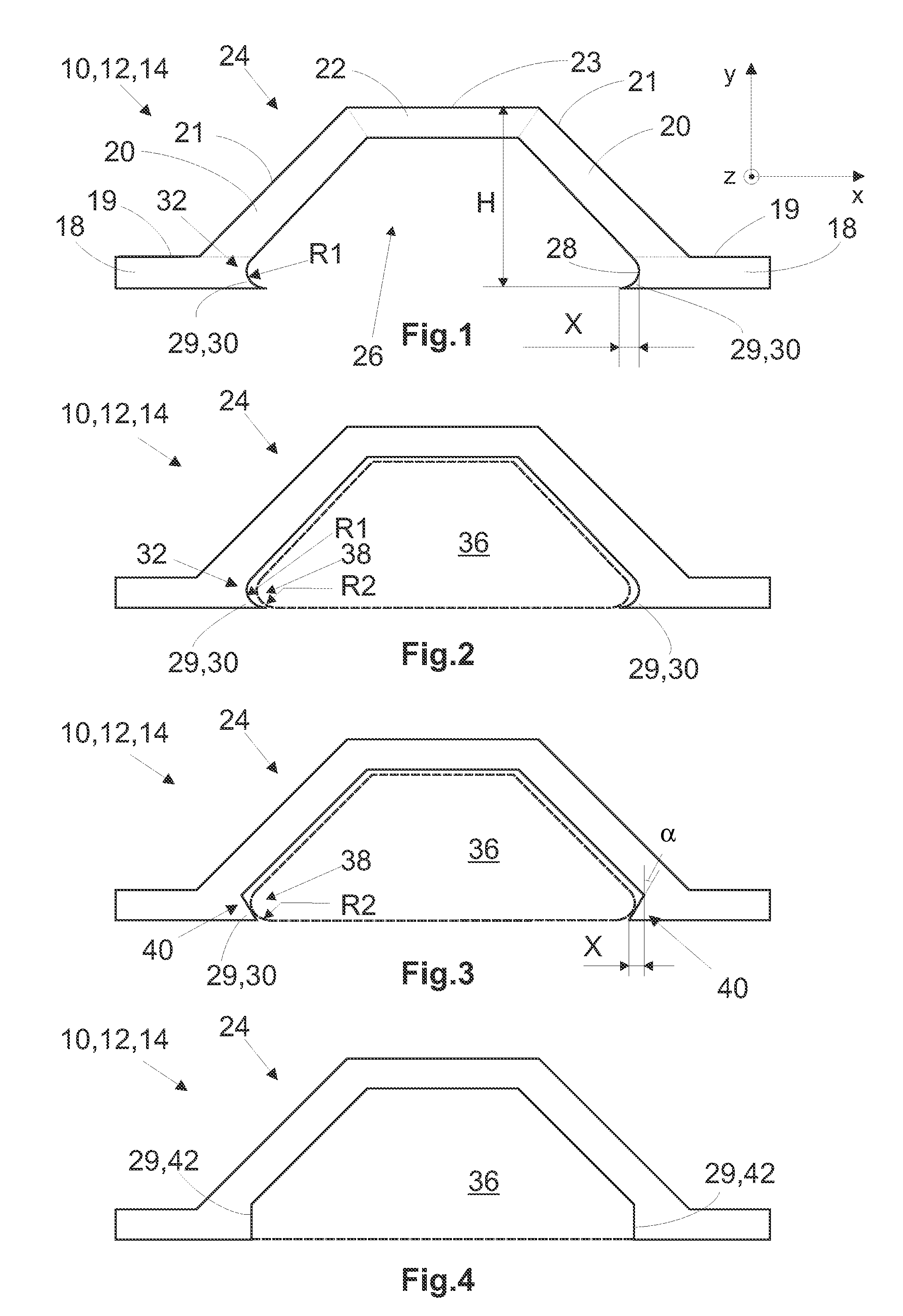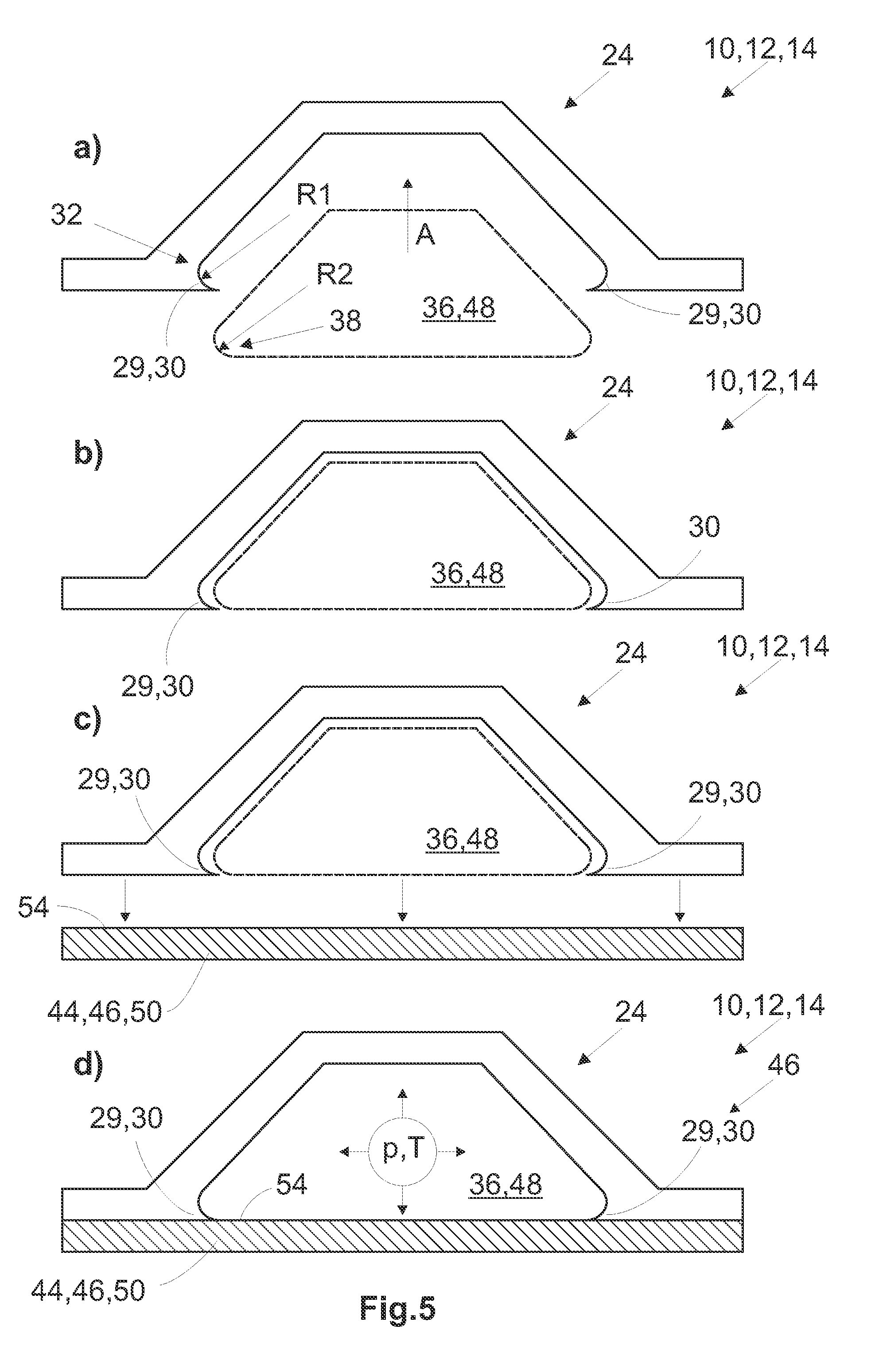Clip Integration of Pressure Tube Mold Cores into Hardened Omega-Stringers for the Production of Stiffened Fiber Composite Skin Shells, in particular for Aeronautics and Astronautics
a fiber composite shell and omega technology, applied in the field of stiffening systems and methods of fiber composite shells, can solve the problems requiring an additional working step, and entail additional weight, and reducing the production efficiency of the fiber composite component. , the effect of reducing the waviness of the fiber composite componen
- Summary
- Abstract
- Description
- Claims
- Application Information
AI Technical Summary
Benefits of technology
Problems solved by technology
Method used
Image
Examples
first embodiment
[0057]FIG. 1 shows the device 10 according to the invention which is in the form of an omega-stringer 12 in a first embodiment, in which respect stringers 14 can be used in any other conceivable design configuration, for example a T-stringer. The omega-stringer 12 includes a wall 16 having respective first, second and third wall portions 18, 20, 22 with a first, a second and a third surface 19, 21 and 23. The wall portions 18, 20 and 22 respectively go into each other. The first and third surfaces 19 and 23 of the first and third wall portions 18 and 22 extend substantially along an x-axis in a co-ordinate system defined in FIG. 1. The second surface 21 of the second wall portion 20 extends at a freely selectable angle to the first and third surfaces 19 and 23 respectively. The individual wall portions 18, 20 and 22 can be of any desired dimensions. The height H, produced thereby, of the omega-stringer 12 can be 30 mm. On the one hand that provides for stiffening of a later fiber co...
second embodiment
[0059]FIG. 3 shows the device according to the invention in the form of the omega-stringer 12. In this case the projections 30 are in the form of a slope 40, wherein an angle α included by the slope 40 with the vertical can be selected as desired as long as it is ensured that the mold core 36 is securely positioned in the space 26. The angle α can assume in particular values in the region of −5° to +450.
[0060]In addition the slopes 40 can also be of any desired dimensions. In this embodiment the mold core 36 is of precisely the same shape as in FIG. 2, but it is apparent that the mold core 36 can be so shaped as to be adapted to the slopes 40 of the projections 30. The undercut configuration X produced by the projections 30, that is to say the extent of the projections 30 in the x-direction, can be selected to be as desired, irrespective of its configuration, and can be for example 2 mm. Slightly negative values are also conceivable, as long as it is possible to guarantee a sufficie...
third embodiment
[0061]FIG. 4 shows the omega-stringer 12 in a In this case it does not have any projections. The mold core 36 is positioned in the space 26 by way of surfaces 42 which are of such a configuration that they exert a clamping action on the mold core 36 so that the mold core 36 is held in the space 26. In addition in this example the mold core 36 completely fills up the space 26 and is therefore of a shape corresponding to that of the space 26. That prevents the mold core 36 from being able to move in the space 26. When the mold core 36 is completely introduced into the space 26 consequently its position is uniquely fixed. Otherwise the omega-stringer is identical to the structure shown in FIGS. 1 and 2.
[0062]FIGS. 5a) through 5d) show the essential steps in a process according to the invention for the production of a flat component 44, in particular a fiber composite component 46. The illustrated example uses the omega-stringer 12 shown in FIGS. 1 and 2. The mold core 36 used is a dim...
PUM
| Property | Measurement | Unit |
|---|---|---|
| pressures | aaaaa | aaaaa |
| height | aaaaa | aaaaa |
| radius R1 | aaaaa | aaaaa |
Abstract
Description
Claims
Application Information
 Login to View More
Login to View More - R&D
- Intellectual Property
- Life Sciences
- Materials
- Tech Scout
- Unparalleled Data Quality
- Higher Quality Content
- 60% Fewer Hallucinations
Browse by: Latest US Patents, China's latest patents, Technical Efficacy Thesaurus, Application Domain, Technology Topic, Popular Technical Reports.
© 2025 PatSnap. All rights reserved.Legal|Privacy policy|Modern Slavery Act Transparency Statement|Sitemap|About US| Contact US: help@patsnap.com



